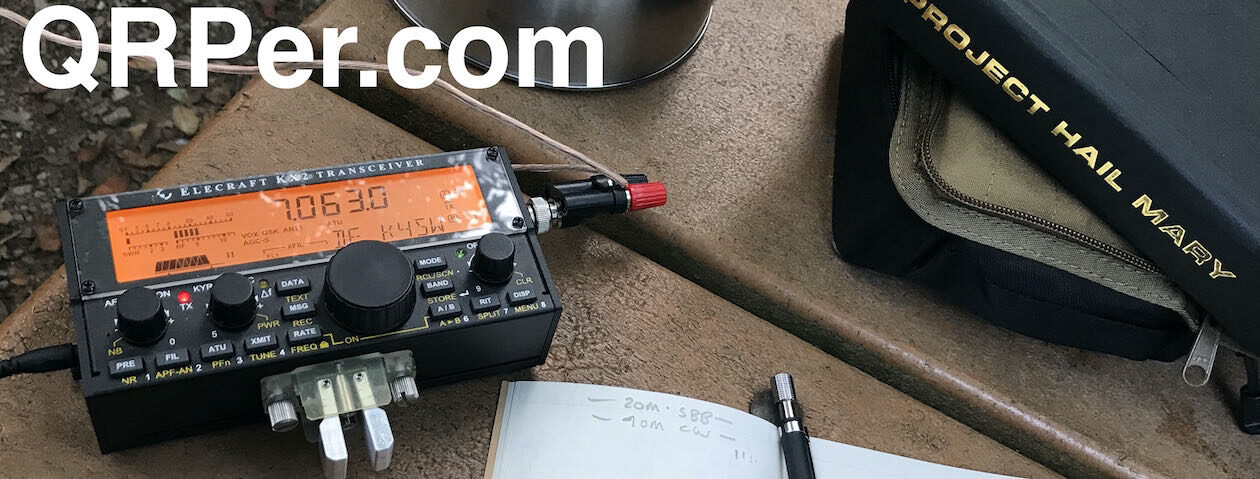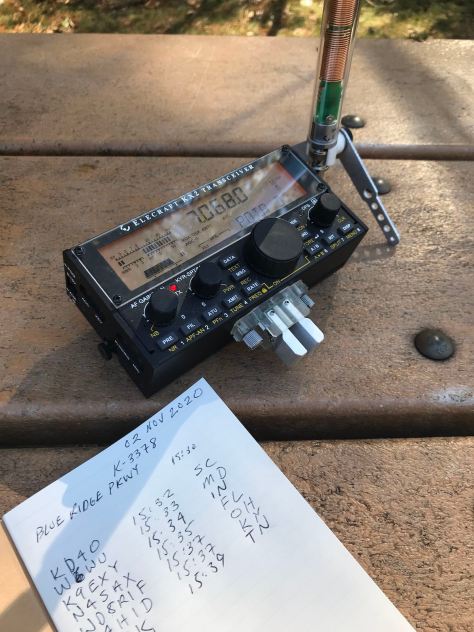 One of the great things about Parks On The Air (POTA) is it provides a brilliant excuse to discover public lands that might otherwise go unnoticed while on vacation.
One of the great things about Parks On The Air (POTA) is it provides a brilliant excuse to discover public lands that might otherwise go unnoticed while on vacation.
Ernest F. Hollings ACE Basin National Wildlife Refuge is a case in point.

 I’m currently taking a little vacation time with the family on the coast of South Carolina and Saturday, December 5, 2020, we decided to explore a nearby park and activate it. I happened upon the ACE Basin Project on the POTA website and thought it sounded intriguing. Our plan was to go to the park, perform a quick activation, perhaps hike a bit, then go to the coast for a beach walk.
I’m currently taking a little vacation time with the family on the coast of South Carolina and Saturday, December 5, 2020, we decided to explore a nearby park and activate it. I happened upon the ACE Basin Project on the POTA website and thought it sounded intriguing. Our plan was to go to the park, perform a quick activation, perhaps hike a bit, then go to the coast for a beach walk.
I’ve been to wildlife management areas and game lands that have been very basic perhaps only featuring a parking area and a trail or two– which is fine, frankly.
But sometimes you happen upon gems like the Ernest F. Hollings ACE Basin National Wildlife Refuge that are so much more!
Let’s activate!

The visitor’s center and the main gates to the house were closed, but the grounds were still open to the public. We parked in the area just outside the main gates.
Gear:
Since I had no idea what to expect on site, I grabbed my Red Oxx Micro Manager field kit that had the Elecraft KX2 and AX1 antenna packed inside.
On this vacation, space in the family car was extremely limited, so I only packed the AX1 and the Chameleon CHA MPAS Lite vertical antennas to pair with the KX2. I left the CHA MPAS Lite vertical in the car assuming I might actually perform the activation back at the parking area once we walked around the main house.
The KX2/AX1 travel kit is incredibly portable and lightweight. That’s the whole kit in the bag in the photo above.
On the air
Turns out, we pretty much had the entire campus to ourselves that day and, as a bonus, there was even an excellent picnic area where I could easily set up the KX2 and AX1 antenna.
I hopped on the air around noon and started calling CQ. I had no internet access on site, but could tell the Reverse Beacon Network and POTA spots page had auto-spotted me because I worked about three stations on CW within the first few minutes.
 I started on 40 meters CW, but quickly moved over to phone before converting the AX1 antenna for 20 and 17 meters.
I started on 40 meters CW, but quickly moved over to phone before converting the AX1 antenna for 20 and 17 meters.
A friend spotted me on the POTA site and I worked a couple more stations on SSB.
After only 15 or 20 minutes on the air, my wife suggested we stay put for a couple of hours. We were all loving the gorgeous weather, wildlife, and beautiful scenery by the pond. She asked our daughters to hike back to the car and grab our picnic lunch. I decided to accompany them and grab the CHA MPAS Lite vertical knowing it would be a much more effective antenna for a longer activation.
The hike was about 30 minutes round-trip (that’s a long plantation driveway!).
After I got back to the site, I installed the MPAS Lite which took all of four minutes. A friend, once again, spotted me on the POTA network and I started calling CQ on 20 meters phone.
I quickly worked stations from Texas, Missouri, Indiana, Massachusetts, New Hampshire, and Ontario.
I wanted to hop back to CW mode though, because I discovered K-0520 (this park) had never been activated in CW before and wanted to give CW hunters a chance to put it in the logs.
I worked stations across the US on 20 meters CW from Tennessee to Kansas, from Arizona, to Alaska, and from Iowa to Ontario. Major fun!
I also decided to head further up the band and work AD1C in Colorado on 15 meters (there were no takers on 12 and 10 meters, but I tried–!).
I started around 17:00 UTC and wrapped things up around 19:15 UTC with 34 logged. That may seem like a low QSO count for over two hours, but a good 45-50 minutes of that time I was off air while hiking back to the car and grabbing the MPAS Lite, setting it up, and enjoying a quick picnic with the family.
All in all it was a very memorable day at the ACE Basic WMA. If you’re ever in the low country of South Carolina, I highly recommend a visit. It’s a stunning site with lots of flora, fauna, hikes, and, of course, a great spot for a little field radio fun!
Note: If I worked you during this activation, it may not show up on the POTA website until I’m home from vacation and can create an ADIF file to submit the logs!






















